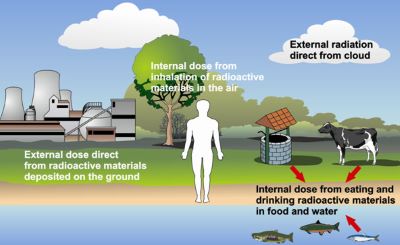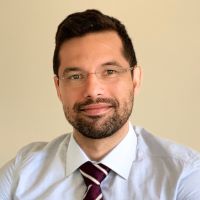April 2021
The UMB Post[doc]
April 2021
Impact of the Chernobyl Disaster on Human Health
Generation Chernobyl – Growing Up with Its Legacy, Living Through the Consequences
Other Things We Saw and Liked This Month
Introduction
Dear Readers,
Welcome to April 2021 and the late start of spring! In this month’s issue we focus on the anniversary of the Chernobyl reactor accident; widely considered the worst nuclear disaster in human history. The accident resulted in a nuclear reactor meltdown, the release of radioactive material across Europe, and shaped global attitudes to nuclear power. Here, we discuss the impact of Chernobyl on human health and the ways that radiation can affect individuals, and hear the voice of a fellow whose life has been directly impacted by this catastrophe. We also take a moment to celebrate the achievements of a postdoctoral fellow whose research work the past year has been recognized.
If you would like to be involved in the making of the newsletter, shaping the content we share, or being a guest interviewee or contributor, please reach out to us at umbpostdoc@som.umaryland.edu.
We wish you a wonderful month!
The UMB Post[doc]
Impact of the Chernobyl Disaster on Human Health
Awadhesh K. Arya

The Chernobyl accident on April 26, 1986, in Ukraine was the most serious accident in nuclear history which changed the lives of many human beings. The explosion in a reactor of a nuclear power plant and the consequent fires that lasted for ten days led to huge amounts of radioactive material being released into the environment and created a radioactive cloud spreading over much of Europe. The four most harmful radionuclides spread were iodine-131, caesium-134, caesium-137, and strontium-90, with half-lives of 8.02 days, 2.07 years, 30.2 years, and 28.8 years respectively
The high doses of radiation received during and after the accident result in acute radiation syndrome (ARS), which occurs if a person is exposed to more than 700 milligrays (mGy) within a short time frame (usually minutes). The patients suffering from this syndrome are depleted of immature parenchymal stem cells in specific tissues, have DNA damage, and common symptoms include gastrointestinal problems (e.g. nausea, vomiting), headaches, burns, and fever. Ionizing radiation can produce reactive oxygen species and directly damages cells by causing localized ionization events. The earlier exposure is very damaging to DNA, while the latter events create clusters of DNA damage. This damage includes loss of nucleobases and breakage of the sugar-phosphate backbone that binds to the nucleobases. The DNA organization at the level of histones, nucleosomes, and chromatin also affects its susceptibility to radiation damage. DNA double-strand breaks (DSBs) are generally accepted to be the most biologically significant lesion by which ionizing radiation causes cancer.
The incidence of cancers due to ionizing radiation increases linearly with effective radiation dose of 5.5 percent per sievert. Several peoples living in the area of the explosion were exposed to ionizing radiation: a major cause of radiation-induced cancer deaths. Thousands of those who were children and adolescents at the time of the accident have developed thyroid cancer as a result of exposure to radioactive iodine. As of 2015, 20,000 cases of thyroid cancer were reported in children and adolescents who were exposed to radiation at the time of the accident. The United Nations Scientific Committee on the Effects of Atomic Radiation (UNSCEAR) 2020 White Paper acknowledges that thyroid cancer is the major health issue (in individuals who were children or adolescents at the time of the accident) and that further investigation is needed to determine the long-term consequences of radiation exposure. Among workers who were exposed to higher doses of radiation, this exposure has contributed to an increase in the number of cases of certain types of leukemia and solid cancers, and possibly of cardiovascular diseases and cataracts. According to WHO, out of 200,000 emergency workers, 3940 died from 1986-1987 due to radiation-induced cancer and leukemia. According to several international studies, people exposed to radiation from Chernobyl have high anxiety levels and are more likely to report unexplained physical symptoms and poor health.
The Chernobyl accident heavily impacted the health of people living in the area at the time of the accident and UNSCEAR experts suggest that now population need not live in fear of serious health consequences due to the slow decay of radionuclides with time.
Generation Chernobyl – Growing Up with Its Legacy, Living Through the Consequences
Ganna Galitska Metzger

The Inferno
Once cheerful and full of life, the little town of Prypiat in the beautiful forests of northern Ukraine near the border of modern Belarus was a highly desirable place to live by Soviet standards. Due to its proximity to the Chernobyl nuclear plant (less than 2 miles), at the time the largest and the most modern in the USSR, the city enjoyed a special granted status within the country and numerous subsequent privileges. It seemed like a dream come true to the many young Ukrainian families who got the chance to settle in Prypiat and work at the power plant, equivalent to winning the lottery. That is, until one fateful spring night, on April 26th, 1986, which made these places notorious the world over. That night, 35 years ago, the reactor’s design flaws led to a power surge, and a horrid explosion blew off the lid of the 4th nuclear reactor, releasing radiation equivalent to 100 Hiroshima atomic bombs into the atmosphere. Carried by winds, the radiation heavily contaminated not only Ukraine and Belarus but the whole of Europe. This technogenic catastrophe, what the Ukrainians call “a nuclear Armageddon”, took the lives of hundreds (some evidence argues for thousands) of people, via direct (acute radiation sickness) and indirect exposure (consuming contaminated food and water) to radiation, left thousands of people homeless and scarred many generations to come. The tragedy is deeply carved into our memory as a nation, to whom the date 4/26/1986 became forever black.
Sometimes Chernobyl and Prypiat are being referred to as a modern Pompeii – only with the difference that not the magma of a volcano has destroyed the cities, but a radiation blast has driven people away under forceful “temporary” evacuation, preserving the city intact, frozen in time, making it a ghost of the past. Abandoned toys, open books, and unpacked school backpacks recall a scene from a horror movie. To a regular Ukrainian, it is a reminder of a bitter reality.
The Cost of Lies
In the days following the disaster, the Soviets tried desperately to silence the information. A short TV message briefly mentioned the “…fire at the Chernobyl plant. Measures are taken.” Not one of the authorities talked about the explosion publicly. Moreover, only a few days after the tragedy, when Sweden randomly detected abnormal radiation levels on its territory and the USA provided satellite images of the destroyed plant, USSR admitted the accident but lowered the number of casualties and radiation magnitude. Despite all of this, as Europe started giving out iodide for prophylaxis to children in an emergency fashion and the kids in Germany were kept inside their homes for protection against radiation, the Soviets forced the public out in their masses to attend the Labor Day (1st May) demonstrations and communist parades in the capital of Kyiv (only 68 miles from Chernobyl), exposing 9 million people to deadly radiation. “We were scared of panic” – Gorbachev would admit later in an interview. What they did not comprehend - or simply care much – was that it was not the panic killing the population; it was the radiation.
Generation Chernobyl: hear their voices
Born less than 120 miles from Chernobyl, my sister, me, and our peers, together with our family and neighbors were growing up and living with the Chernobyl legacy, “in the radioactive shadow” of the nuclear plant. We carry it as the firsthand stories of the witnesses and parents in our memories, and in the worrisome signs of radioactive exposure in our bodies. My sister, less than a one-year-old baby at the time of the meltdown, along with thousands of other children were exposed to the radiation. She, her friends, and every one of her classmates received a dose large enough to have their thyroids destroyed at the dawn of their lives. They are commonly referred to as “Chernobyl kids” of different categories (I-III) and were granted a one-week summer vacation at the seaside by the government; a government which failed to protect these children in the first place. After 35 years, the survivors of this generation have children of their own but continue to suffer severe health consequences. Cancer, thyroid function loss, terrifying weight loss, heart, and respiratory diseases, infertility – these are just a few examples of what they are going through. You will find a bottle of thyroid hormone pills on their bathroom shelves.
Despite the Soviet downplay of the consequences of the tragedy, the Chernobyl disaster was widely acknowledged as the largest technogenic catastrophe in the history of humanity. Further progression of the disaster would have left Europe completely uninhabitable for thousands of years, Prypiat on a continental scale.
Thanks to thousands of young volunteers, firefighters, and soldiers – so-called “liquidators” -tirelessly working side-by-side, this did not happen. As witnesses describe it, there was no panic among the liquidators: they cleaned, decontaminated, finished the shift, and return to the reactor remains the next day. They did not know the full extent of the tragedy, answering always in the same way: “If not us, then who?”. No one has asked: “How much do they pay?” Just: “What can I do?” Volunteers just packed up and arrived.
The real radiation level was forbidden to disclose to the volunteers. However, the liquidators intuitively felt the risk: “You could taste the radiation in your mouth...It had a metal taste…”
The liquidators got the highest exposure in the days following the disaster and were the ones paying the highest price. Most were “eaten by” cancer in the following years. Other suffered infertility. Those who survived and lived long enough to see their kids, hear the stories of a neighbor, a former colleague, or a friend dying from cancer in their 40-50s. Although they carried the weight of the world on their shoulders, their names are largely unknown. Most of these heroes live now only in the memories of their loved ones.
As a child - you do not fully understand the consequences Chernobyl might have on you; as a grown-up, a scientist with a Ph.D. in Molecular Medicine, I start to come to an understanding of the extent of the incalculable and horrific damage inflicted upon my entire nation, and my generation. I will not understand nuclear tourism and never visit Chernobyl. Chernobyl is our collective trauma.
Aftermath
The year 2021 marks the 35th anniversary of the Chernobyl disaster, the catastrophe which eventually took down not only the Soviet nuclear industry but the USSR as a whole. First ecological and later political movements were born on the ashes of Chernobyl, demanding the communist authorities be held responsible for mismanaging the technology and concealing the information – both from the world and their citizens. To many Ukrainians, the Chernobyl disaster does not have a past tense; its consequences continue to be seen, evaluated, and feared. Neighboring Belarus shares our pain: in the path of the prevailing wind that devastating day, a fifth of the country’s agricultural land was contaminated.
Over 100 radioactive elements were released into the atmosphere when Chernobyl’s fourth reactor exploded.1 Among those, Iodine-131, Strontium-90, and Caesium-137 isotopes accounted for most of the harmful effects following the accident. With half-lives of 8 days, 29 years, and 30 years, respectively, the isotopes Strontium-90 and Caesium-137 are therefore still present in the area to this day. While iodine is linked to thyroid cancer, Strontium can lead to leukemia. Caesium is the element that traveled the farthest and lasts the longest. This element affects the entire body and is particularly harmful to the liver and spleen. It is not surprising then, that cancer figures in Belarus (especially), Ukraine, and Poland, rocketed in the late 1980s and early 1990s. The corridors of children’s cancer hospitals are full of children with leukemia awaiting bone marrow transplants. Others undergo the intense treatment regime for thyroid cancer, which in most other countries affects very few under-18-years-old. Invisible, the slowly decaying radioactive particles from Chernobyl are still claiming the lives of innocent victims. There has been an increase in birth defects in children born in the Chernobyl fallout area since 1986. 2 The incidence of rare cancers is extremely high, with tumor types that are rare anywhere else in the world. This is in addition to the prevalent birth abnormalities, genetic disorders, and learning disabilities. 3 The overall effect on future generations is not known yet as the data remains limited, cohorts of adolescent and pediatric patients and criteria of evaluation in various studies were not entirely consistent.4
With the opening of public archives after the fall of the Iron Curtain, Ukrainian scientists, doctors, scholars, as well as general public finally gained access to classified Chernobyl documents and learned the truth. The full extent of the damage done to the Generation Chernobyl and the future ones to come is only now being discussed and publicly addressed.
The Chernobyl disaster sadly holds many teachable moments: it warns us about the costs of lies, especially when regimes cover up truth to preserve their power and influence. In today’s reality of fake news, dishonesty, and distortion of facts, the events of 26th April 1986 remain a valuable lesson, from which there is sadly too much to be learned.
Postdoc Achievements
Marcel Lanza, PhD

This month, we chatted with Dr. Marcel Bahia Lanza, a postdoctoral fellow at the Department of Physical Therapy and Rehabilitation Science, University of Maryland School of Medicine (UMSOM). Dr. Lanza joined UMSOM less than two years ago and works in the laboratory of Drs. Vickie Gray, Odessa Addison, and Alice Ryan. His current research is to understand the underlying neural and morphological mechanisms of falls after a loss of balance in older adults and stroke survivors. Dr. Lanza is also interested in researching how different resistance training methodologies affect force production, muscle size, and brain-muscle connections. He aims to merge both lines of research in the future. Since his time as a postdoctoral fellow at UMSOM, Dr. Lanza has contributed towards the publication of four research articles. Some of the recent publications demonstrate for the first time that the strength capacity of the hip abductor and adductor muscles of older adults is essential before performing a step to the side, which can be critical to avoid the fall. Dr. Lanza is further investigating how these muscles may impact other tasks related to loss of balance and concomitantly falls. His aim is to provide critical information about the importance of these muscles, so physiotherapists and trainers can apply that daily in training for older adults. Dr. Lanza aspires to have his own lab and maintain the fall prevention research along with the resistance training research to help older adults to have a life with better quality as they get older.
April Career Development Events
Tools to Finding a Faculty Position - General Overview and Timeline: Thursday, April 8th, 12-1:00 pm
Speaker: Jennifer Aumiller.
Scientific Writing Seminar Series - Tips for Writing Case Reports, Commentaries, and Review Articles: Thursday, April 15th, 9-10:00 am.
Tools to Finding a Faculty Position - Search Committee Panel: Thursday, April 15th, 12-1:00 pm
Matt Trudeau, Professor, Department of Physiology
Brian Mathur, Associate Professor, Department of Pharmacology
Bill Jackson, Associate Professor, Department of Microbiology and Immunology
Responsible Conduct of Research Training Series - Animal Subjects: Tuesday, April 20th, 3:00 pm
Speaker: Sharon Tennant
Tools to Finding a Faculty Position - New Faculty Panel: Thursday, April 22nd, 12-1:00 pm
Roger Bannister, Assistant Professor, Department of Pathology
Lynda Coughlan, Assistant Professor, Department of Microbiology and Immunology
Amal Isaiah, Associate Professor, Department of Otorhinolaryngology
Research Skills Seminars - Maximizing Translational Research with ICTR: Thursday, April 22nd, 1-2 pm
PDAC Teaching Seminar Series - Workshop 2: The Case of Active Learning: Monday, April 26th, 1-2:00 pm. Speakers: Eric Belt, Christina Cestone, Erin Hagar, and Violet Kulo.
Funding Seminar Series - Funding Opportunities through the US Department of Veteran Affairs (VA): Thursday, April 29th, 9-10:00 am.
Tools to Finding a Faculty Position - CV Workshop: Thursday, April 29th, 12-1:00 pm
Other Things We Saw and Liked This Month
World Autism Awareness Day
Embracing the community as we honor those diagnosed with Autism Spectrum Disorder (ASD) on World Autism Awareness Day on April 2, 2021. We share with you the proclamation signed by the US President- Joseph R Biden, Jr.
Earth Day
Fifty-one years ago, Earth Day was founded in the United States as communities gathered to raise awareness about the Earth and demand for clean energy. Now, over 140 countries recognize and celebrate World Earth Day on April 22. The Nature Conservancy is hosting a free virtual event on April 22, 2021, to acknowledge and applaud the efforts of environmental activists and scientists- you can find more about this event and learn of the heroic efforts of the speakers in this article.

Previous Issues
